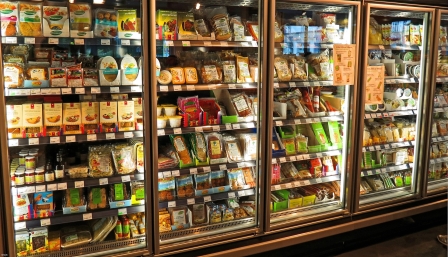October 3, 2016
 If your company is experiencing a dip in sales, cross merchandising might be the answer to your troubles.
If your company is experiencing a dip in sales, cross merchandising might be the answer to your troubles.
There are many tricks of the trade merchandisers use to attract customers to their displays and maximize their sales, but few have proved to be as effective as cross merchandising. But for those unfamiliar with the term, it might be intimidating to give it a try. Here’s everything you need to know about this effective marketing tactic.
What is cross merchandising?
Cross merchandising is a strategy that boosts sales by placing complementary items alongside one another in stores. There are many classic cross merchandising examples, such as putting ketchup and mustard next to hamburger buns, placing dog food next to food dishes, and setting Halloween candy next to trick-or-treating buckets. The idea is simple: If customers are looking for one of these items, they might also need the other – even if they don’t know it before they see the product on the shelf.
This form of merchandising is incredibly common in grocery stores, but any retailer looking to boost sales can utilize this strategy with careful planning. It is important to research customer preferences, take seasonal trends into account and, most importantly, pair items that are often put in use together to maximize revenue.
Make your customers feel right at home
Part of the reason cross merchandising works is because it allows consumers to see the purpose individual products will serve once they get them home. In the pet product industry, for example, cross merchandising is a great way to seal the deal when buyers are considering a purchase.
“Help the consumer envision the product in their home by displaying items with pet mannequins or using images showing the products in a home environment,” Aimee Diskin, director of innovation and product development, for pet product company Worldwise told Pet Product News.
In pet stores, placing dog food next to bowls is an easy way to cross merchandise. Furthermore, items such as doggy bags for pet waste don’t need to be sold exclusively in the pet aisle. Savvy retailers could market these items along with other cleaning supplies to promote impulse sales in shoppers who might decide to resupply their stock back home on the fly.
Clothing retailers can use this approach by placing a shirt, pants, jewelry and other accessories on mannequins throughout the store to entice shoppers to purchase an entire outfit instead of just one item.
Regardless of the industry, it’s important to only merchandise items together that make sense. By leveraging mobile CRM software, field merchandisers can take photos of different displays to keep track of which items are being paired together in each store, and then the marketing team can analyze the sales data of those groupings to determine which ones sell most effectively together.

Don’t forget to do your research
A successful cross merchandising strategy relies on having a well-oiled process of research and analysis, followed by the implementation of new ideas based on that research. The first step toward an effective cross merchandising plan is to arm yourself with knowledge about which brands your customers like the most.
Managers should have their field merchandisers go to each store regularly and collect customer data such as the type of products being purchased, the quantity of the product, in addition to any special notes such as whether an item is on sale, so companies can determine which of their cross-merchandising strategies are working. This is an efficient way to gain a valuable insight into what a brand’s customers are thinking.
Take a hint from the cross merchandising experts
Nowhere is cross merchandising more prevalent than in grocery stores. Take Shulman Produce as an example. The retailer has had success cross merchandising its sweet onions in supermarkets alongside other produce items, such as celery and lettuce, as well as next to fresh deli meats like turkey or ham, Produce Retailer reported.
Staying on top of new trends in your industry can also lead to new opportunities for cross merchandising. This strategy has proven especially effective for companies selling tea. While some brands boost sales by displaying their teas next to biscuits, others look for cross merchandising opportunities within their own verticals. This might mean showcasing tried-and-true favorites alongside newer, trendy flavors. In the beverage business, that might mean placing perennial best-sellers next to fruit teas or decaf coffee, which have grown in popularity over the last few years, according to Retail Newsagent.
Business & Finance Articles on Business 2 Community
(120)






